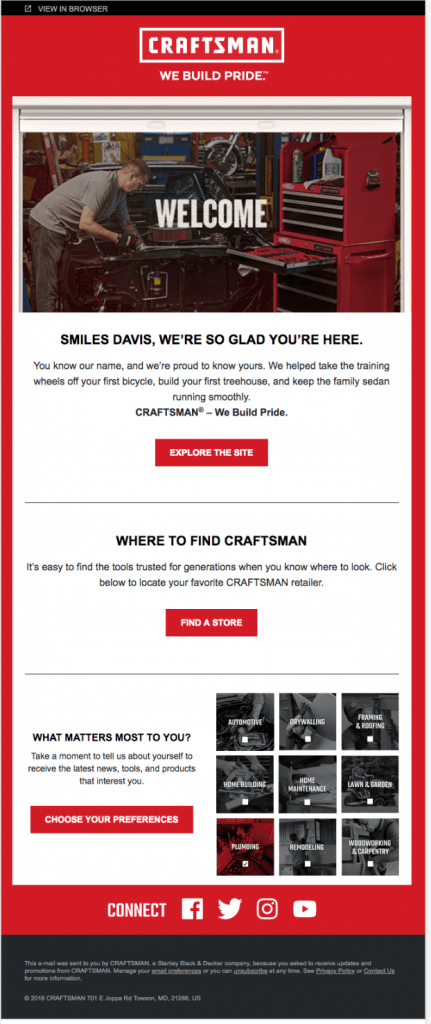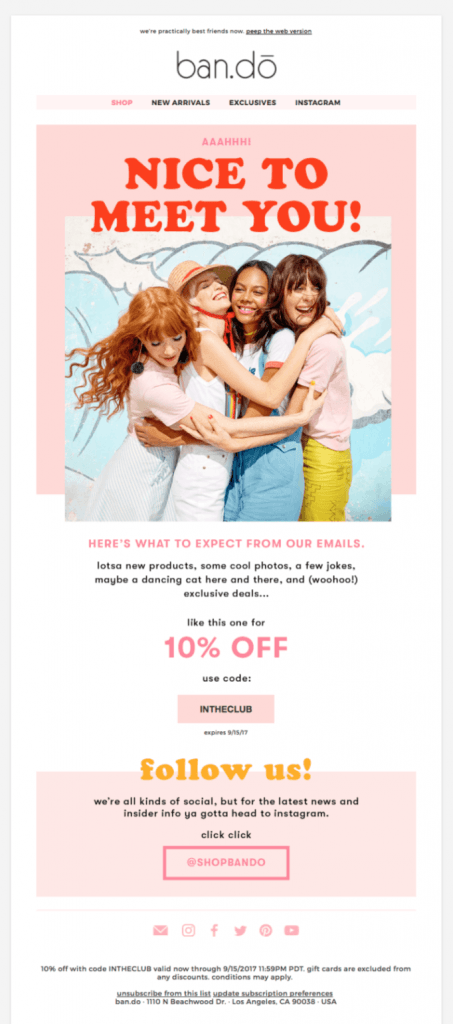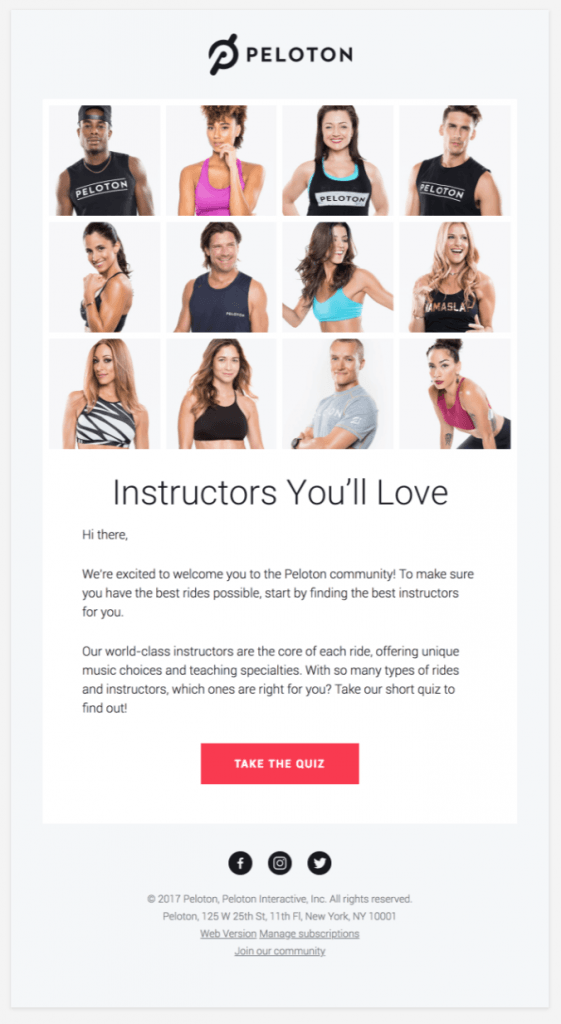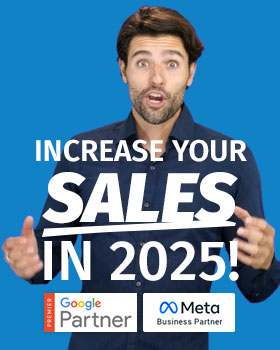Did you know that a welcome email series is one of the most overlooked email automations of small- to medium-sized businesses?
As it turns out, many who send out newsletters or campaigns on a regular basis completely overlook this crucial component to any email marketing strategy.
When first starting out with email marketing, it is common to overlook a welcome email automation series. The focus tends to be on newsletters or specific campaigns, which are usually sent out weekly, bi-weekly or monthly. As we collect new subscribers, they are left waiting in the wings for your next newsletter. They could be waiting for days – if not weeks – to receive an email after signing up for your list! By that time, the novelty and excitement have worn off.
Maybe they don’t really remember you, and if they do, they are nowhere near the same level of engagement as they were ten days prior. If you received your first email 10 days after signing up, there is a good chance you have already lost a great deal of interest in that particular company. They are not as engaged as they were the moment they signed up for your updates.
By creating a welcome newsletter series you can take advantage of the momentum that these subscribers have when they first sign up for your list. And it’s really easy to get started.
In this post, I am sharing with you my top 7 ways to win over customers through a welcome email series. Strategies that convert potential shoppers into customers, whatever your business may be.
1. Take Advantage of Their Interest NOW
When users sign up for your list, this means two things: 1) They want to build a relationship with you and 2) They want to see your content now and get to know you better. The relationship starts to grow both ways. Setting a welcome email to trigger instantly to your new signups is easy and needs to be the first marketing automation series that every business sets up. It doesn’t need to say much more than what you want it to. A simple “Hello” and basic greeting with an introduction along with your business contact information is a perfect start. Not sending that first welcome email means that interest fades pretty quickly and is lost.
[Image Source: Introductory Welcome Email from Ribbed Tee]
2. Learn Something About Your Customers
The welcome automation series is the perfect opportunity to learn something new about your customers.
So why not ask them?
Think of it this way: Is there something you would like to know from them – is there some vital piece of information that would improve your business?
You can learn important things about your audience to help you shape your product offering, positioning and future marketing – and get insights for designing those coveted sales funnels. Furthermore, you are sparking engagement and, as we all know, engagement is key for the all-around success of your future marketing campaigns. Have a link to a preferences section like this example here, from Craftsman.
3. Showcase Your Best Content
The welcome automation series is the perfect opportunity to showcase your best and greatest content. Things like blog posts, videos, how-to emails, and all the latest and greatest content they may not find when checking out your site for the first time. What’s even better – the content doesn’t need to be recent.
If someone just joined your email list, then it’s likely they probably found out about your business pretty recently. That means they haven’t read that super popular blog post you wrote six months ago. So what you can do is collate and summarize your best content into the welcome series or feature links, and drive traffic back to the content itself. Either way, it’s a win-win for both you and your subscribers as it shows you have some really great content to share.
Additionally, it continually brings you traffic and builds your overall reputation.
4. Sequence Your Series in the Ultimate Flow
This brings me to my next point. Once you have a selection of content that you want to share, you’ll need to string it all together in a format and sequence that makes sense and flows nicely. You’ll want to avoid content saturation and stick to just one topic so your subscribers don’t get overloaded with too much information.
A good rule is one call-to-action button and perhaps a few sentences on the main points you want to get across. For example, if one email talks about how your products are made, you’ll maybe want to share some of your bestsellers first. Or if you are telling how your products are influenced by a certain event in your life, you’ll want to first share some details about that specific event.
5. Connect on Social Media
Your welcome series is the perfect opportunity to showcase your social media channels and get your subscribers on board with you.
What’s great about this is that by joining you on social media, they are seeing the “fun” side of your business. Maybe you have some great customer reviews, customer photos or fun how-to tips that connect with them on a personal level. As most customers are not ready to buy immediately, social media is a great way to get them more comfortable with your brand.
Here’s another example from Bando that tells subscribers exactly what they can expect and links to the brand’s social media.
6. Skip the Hardsell
This brings me to my next point. I always suggest keeping the focus off selling at the beginning while customers get to know you and warm up to your brand. You can share things like customer reviews, tips, how-to videos, quizzes, social media links and articles. Answer their burning questions and address the needs they have, because that is why they came to you in the first place. Towards the later part of your sequence, you could start adding in your products and services in a subtle way – through call-to-action buttons, or even a little P.S. note that mentions your product or service page.
You can also put in a first-time purchase offer, for example, a discount code for 10% off their first order, a free shipping code, or any little incentive that will get them to make that first purchase. And if you want to get really detailed, most automations and integrations these days can be set up such that if no order is placed when the first discount is offered, a reminder could be sent, or even a second, more incentivized offer a few days later.
Here’s a perfect example from Peloton, which introduces their instructors with a quiz.
7. Don’t Lose Touch
Determining when and how often to send emails from your welcome series depends on how many emails are in your welcome series. If you put together enough content for five emails you could even space them out every two days; that way, you are extending the series over a bit of a longer term. I have even seen some series go on for two weeks or more! It really is all about the content that you have and what you want to share with your subscribers.
—
Making a welcome automation part of your email marketing strategy should be your top priority if it isn’t already. It really is a win-win for you and your subscribers. Why? Because they see your best content and get new things to engage with frequently enough that their interest won’t fade, and you get recurring engagement that leads to sales.
So make it a priority to send them great emails they’ll love, making THEM love YOU, and becoming long-term friends with your brand.
Email sequences not working? Check out our post, Top 4 Things That are Killing Your Email Marketing and How to Fix It.

Melissa Richt, MBA '06, BS 03’ runs her own marketing consulting firm in Sweden. Melissa has 15+ years of experience in the marketing industry and has a strong background in email marketing and automation campaigns. She works with small and medium sized companies all over the world assisting them with their campaign planning and strategy, ensuring top-notch inbox results. You can find more details on her website: www.melissaricht.com
Recommended articles
 Facebook Ads for eCommerce: 16 Strategies, Examples & Tips
Facebook Ads for eCommerce: 16 Strategies, Examples & Tips
 How to Build a Winning eCommerce Ads Strategy
How to Build a Winning eCommerce Ads Strategy
 Google Ads for eCommerce: Everything You Need to Know
Google Ads for eCommerce: Everything You Need to Know
 10X Your Traffic with PPC Management Software
10X Your Traffic with PPC Management Software
Comments
Powered by Facebook Comments







